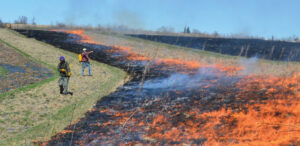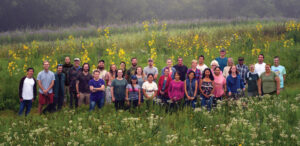Are You Mowing Your 1st Year Prairie?
Did you plant a native seed mix recently? MAKE SURE YOU MOW THIS SPRING!
Mowing your newly-planted site the first growing season is referred to as maintenance mowing. Right now you probably see a lot of weeds, some juvenile prairie grasses, and wildflower seedlings. Some native annuals from your seed mix, like Black-eyed Susan, may be about to bloom, but don’t be swayed, it’s time to mow!
Regular summer mowing will prevent quick-growing weeds from shading new native seedlings and dropping additional seeds on the site. Mowing will not harm new native plants!
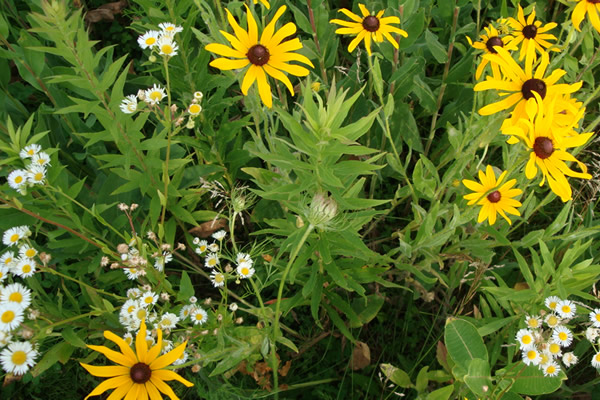
If your first-year planting looks like this, mowing is overdue! You may be encouraged by the Black-eyed Susan or Daisy Fleabane and not want to mow, but also pictured, Canada Goldenrod and Queen Anne’s Lace, are weeds and need to be mowed, along with the native “pioneer species”, to allow light in.
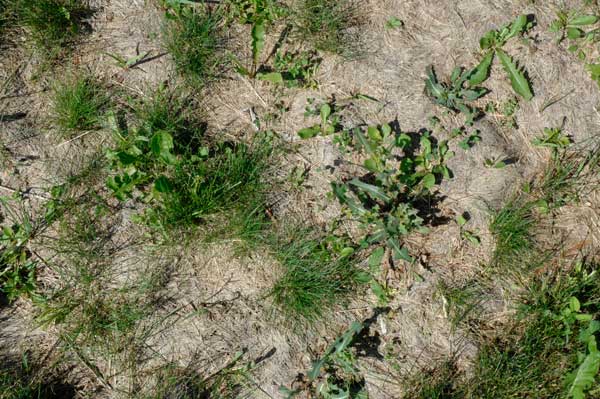
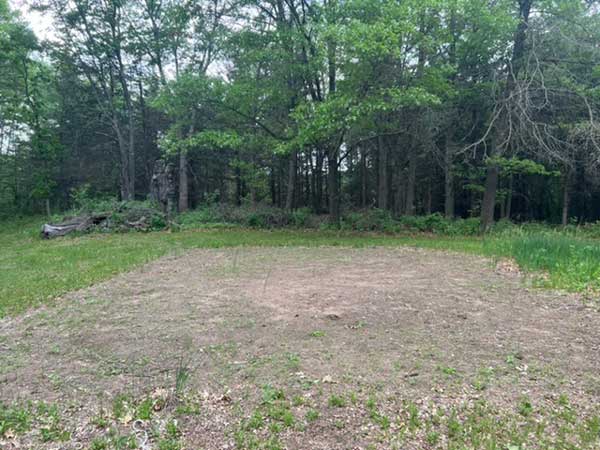
If your planting still looks like a lot of bare dirt and nothing to mow, fear not! That just means you don’t have many weeds to contend with. First-year planting often look like this in early June. You will start to see more growth throughout the summer.
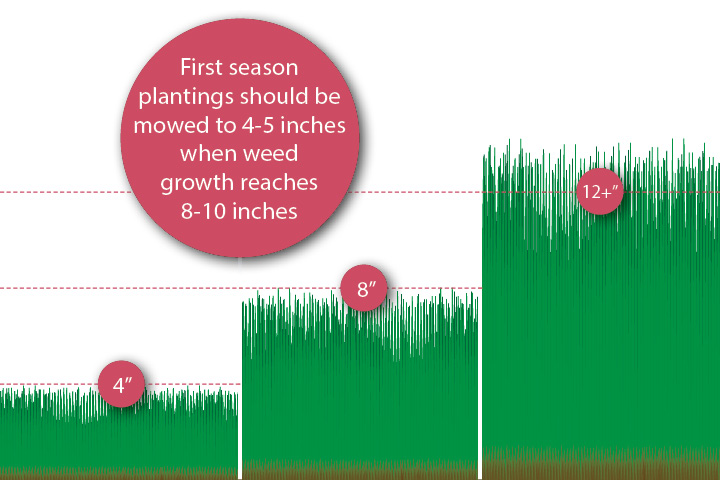
Set your mower to a high setting; 4-6″ on most mowers. Mow as frequently as your site demands; usually that is when growth reaches 8-10 inches or weeds want to flower.
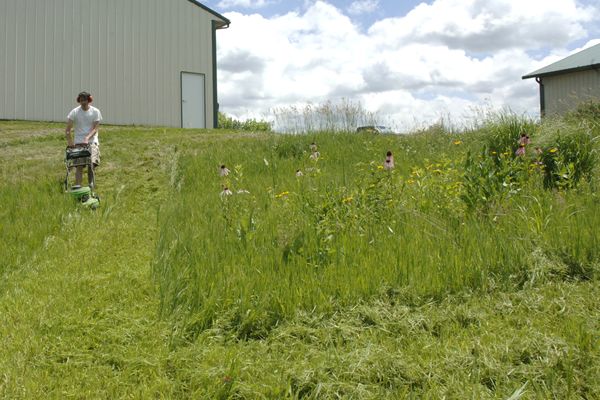
Here is a 1st year planting next to a 3rd year prairie. We practiced maintenance mowing multiple times during the spring-summer to allow light to infiltrate and to prevent weeds from going to seed. Mowing will not harm young native plants. You can usually stop mowing at the end of the first season. If weeds are thick in the beginning of the second season, mow or spot-mow once or twice.
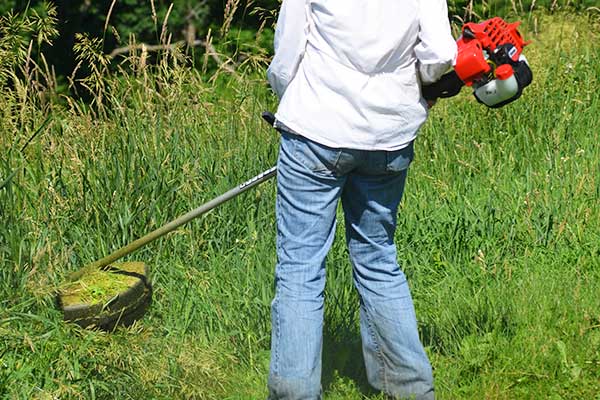
Hand-held string trimmers are ideal for small areas or steep slopes.


